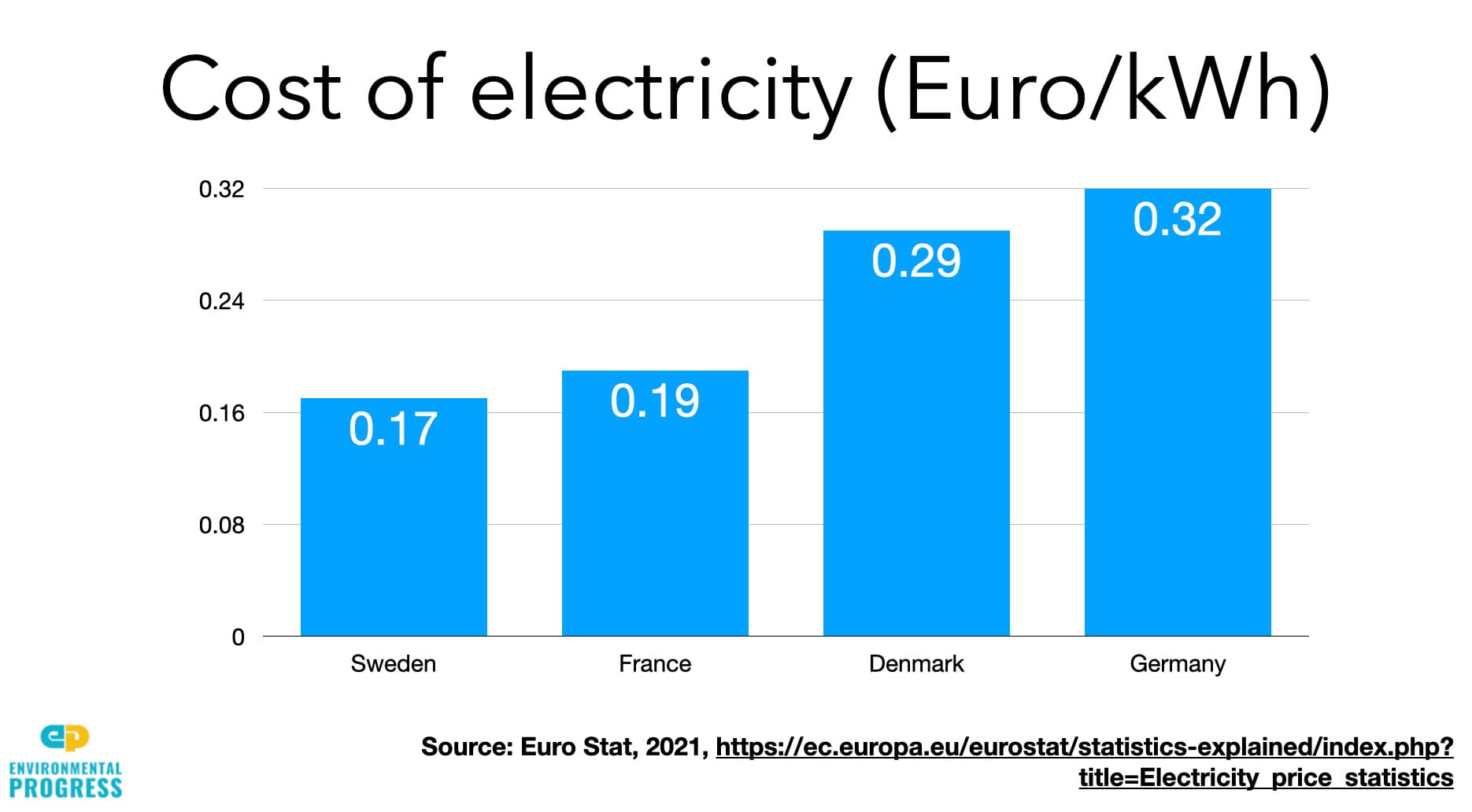by Michael Shellenberger
A half trillion dollars to subsidize renewables would have raised energy prices, worsened inflation, and undermined decarbonization. But what do we do now?
The centerpiece of President Joe Biden’s legislative agenda is dead. Senator Joe Manchin today announced that he could not support Biden’s “Build Back Better” legislation which consisted of $1.7 trillion in new spending and would have added $158 billion to the national debt over the next decade, according to the nonpartisan Congressional Budget Office. The largest component of spending, $570 billion, was for renewables, electric cars, and other climate change investments.
Progressives, environmentalists, and Democrats are furious with Sen. Manchin, but it was their own climate and renewables dogmatism that doomed the legislation. Democratic Senators could have written legislation that expanded nuclear energy and natural gas, the two main drivers of decarbonization, which are strongly supported by Manchin, and Republicans, but instead investments went overwhelmingly to solar panels, wind turbines, and electric cars.
It’s true that there were good things in Build Back Better, and that one of the worst climate provisions, the Clean Energy Performance Program, was already removed. Build Back Better included a tax credit for existing nuclear power plants, funding for advanced nuclear fuels, funding for fusion R&D, and financial support for communities hurt by the transition to renewables.
But the money for nuclear would not have made much if any difference to the operating of nuclear plans. Nuclear plants in California, Massachusetts and New York are being shut down, despite already being profitable, for ideological reasons. Legislatures in less anti-nuclear states like Illinois, New Jersey, and Connecticult step in to save their plants when they need to. And higher electricity prices due to natural gas shortages are making nuclear plants in other states even more profitable.
Of Build Back Better’s $550 billion for climate and energy, the vast majority of it was for weather-dependent renewables and their enabling infrastructure, including $29 billion for a “green bank” program to finance renewables and $10 billion for rural electric cooperatives to switch to renewables. Such subsidies were being offered despite years of false claims by many of the legislation’s sponsors and advocates that solar and wind were already cheaper than grid electricity.
Most dangerously, Build Back Better would have undermined electricity reliability, raised energy prices, and made the U.S. more dependent on foreign energy imports. Over-reliance on weather-dependent renewables in Texas and California, and under-investment in reliable, weather-independent nuclear and natural gas plants, led directly to deadly blackouts in those states.
I testified as much to this problem to Manchin’s Senate Commitee on Energy and Natural Resources, and Sen. Manchin made clear today that the role of renewables in making electricity expensive and unreliable was one of his top concerns. “The main thing that we need is dependability and reliability,” he said this morning. “If not, you’ll have what happened in Texas and California.” In his statement, Manchin said, “If enacted, the bill will also risk the reliability of our electric grid and increase our dependence on foreign supply chains.”
Adding weather-dependent energy sources can only make grids more resilient if significantly more money is spent maintaining reliable power sources to make up for their lost revenue and lost operation hours. That’s what Germany has done, deciding to burn more coal rather than continue operating its nuclear plants, which it’s shutting down, or rely too heavily on imported natural gas.
Manchin is also right that Build Back Better would increase dependence on energy imports. Over 80% of the world’s solar panels are made in China by incarcerated Uighyr Muslims living in concentration camps and against whom the Chinese government is committing “genocide,” according to the U.S. State Department.
Build Back Better contained incentives for the return of solar manufacturing to the U.S., but they were far too small to compete with solar panels made by incarcerated people in China’s already-built and heavily-subsidized mega-factories. Nor did they deal with the coming solar panel waste crisis.
“We have been energy independent for the first time for the first time in 60, 70 years or more,” noted Manchin, “and we should not have to depend on other parts of the world to give us the energy, or be able to hold us hostage for the energy, or the foreign supply chains that we need for the products we need every day.”
Everywhere in the world that solar and wind are deployed at scale they increase electricity prices dramatically. California increased its electricity prices seven times more than the rest of the U.S. over the last decade. Germany has the highest electricity prices in Europe, and is breaking new records with the energy shortage caused by lack of adequate natural gas supplies globally.
And now the entire world is paying the price of climate alarmism and renewables dogmatism. Climate shareholder activism and the ESG “sustainable” investment movement caused governments and private sector actors to underinvest in oil and gas production and over-invest in weather-dependent renewables. The result is historic shortages of natural gas and oil.
For the last several weeks Europen and Asian nations have been breaking records for the cost of electricity, due to shortages of natural gas supplies. Oil prices are set to rise to $125 per barrel next year and $150 in 2023, and U.S. winter natural gas prices will be 30% higher this year. Even nuclear-heavy France, which became over-invested in renewables and natural gas, and under-invested in nuclear, is seeing record electricity prices.
But what then, does it mean for climate change? And what should be done to safeguard American energy supplies going forward?

